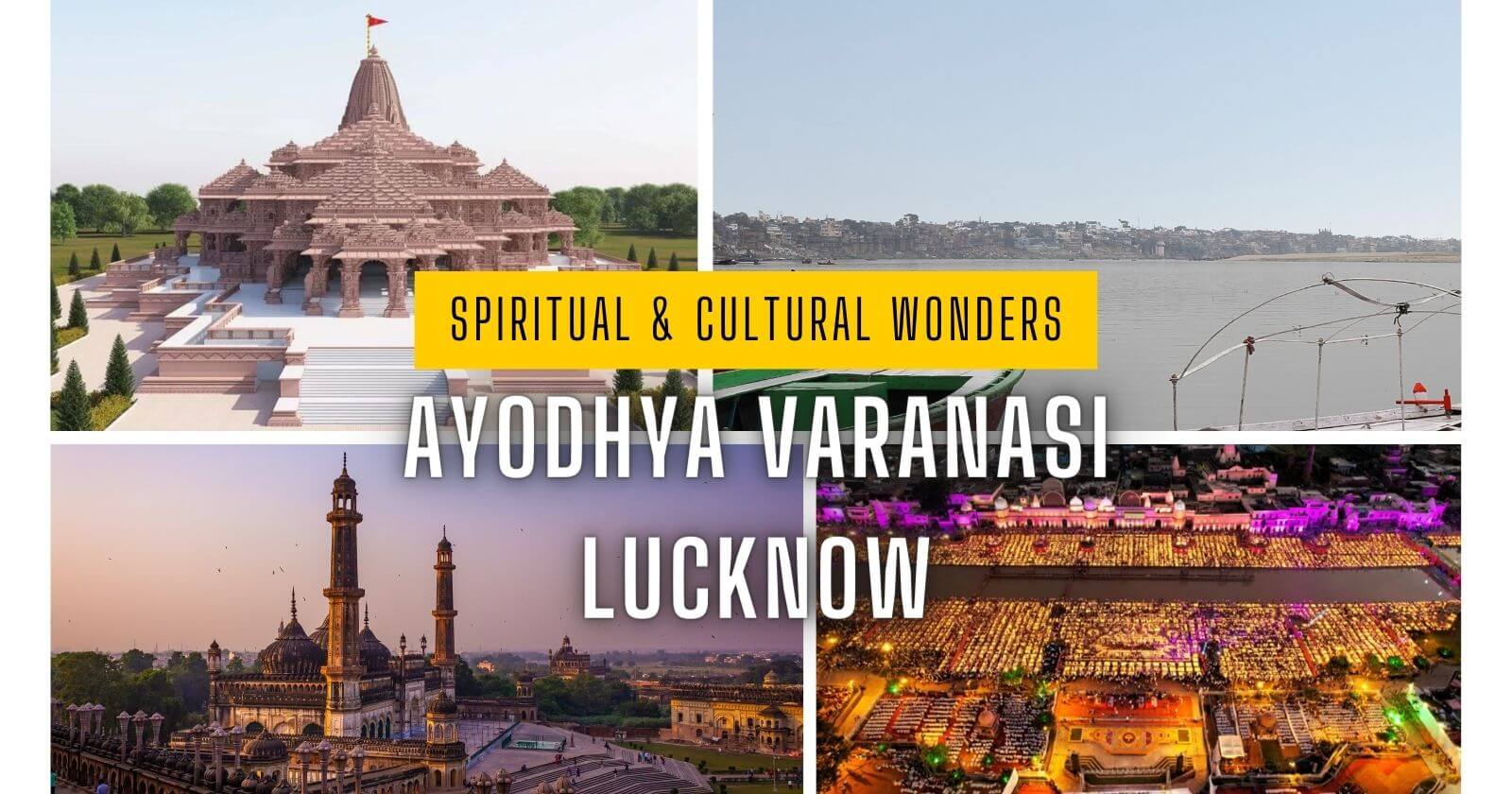An enchanting journey waits to take you to the heart of India – Uttar Pradesh. A state rich in history, culture, and spirituality, UP has something to offer all kinds of travellers – from temples to gardens and monuments. If you’re planning a trip to this diverse state, a long weekend is perfect for visiting the trio of Ayodhya, Varanasi, and Lucknow. It promises an unforgettable experience, each city offering something unique and beautiful.
In this carefully crafted 4-day itinerary, we’ll guide you through the best of Ayodhya, Varanasi, and Lucknow. From the sacred banks of the Ganges in Varanasi to the mythical birthplace of Lord Rama in Ayodhya and the regal splendours of Lucknow, these cities form a perfect trio, encapsulating the essence of India.
How to Plan Your Ayodhya Tour?
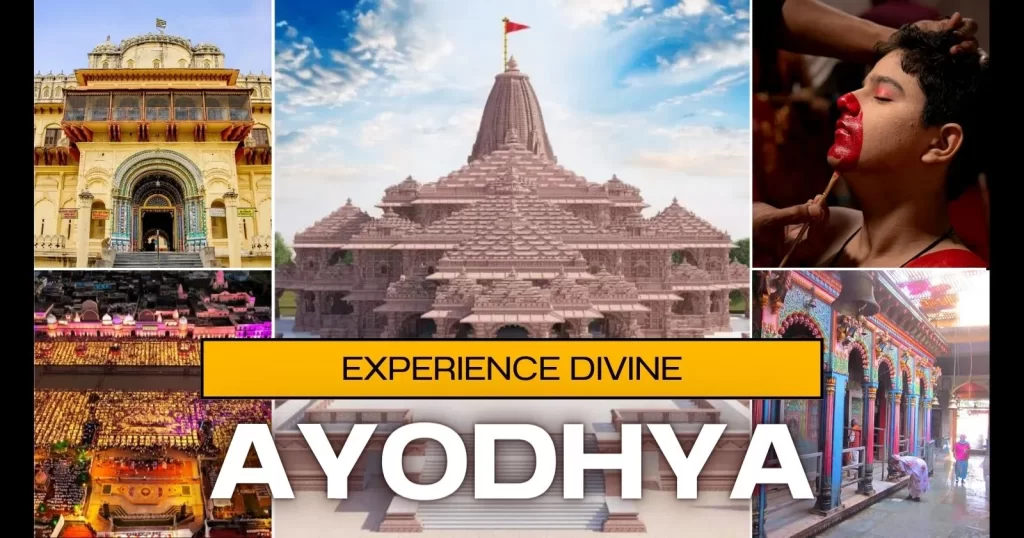
The Sacred Trails of Ayodhya
Let’s begin our journey with Ayodhya. This beloved UP city is also called the birthplace of Rama. Whether you are travelling by train or flight, Ayodhya is a short drive from Faizabad. With all the buzz around Ayodhya, you can put this divine location on your must-visit holiday spots. Now, isn’t that a sign that you need to go on a much-needed feel-good vacation?
Consider booking your stay in one of the cosy guesthouses or heritage homestays for a more authentic experience. Shri Ram Hotel or Ramprastha will offer you affordable and comfortable accommodations and are steeped in local charm.
Is One Day Enough For Ayodhya?
You can see all the major attractions in Ayodhya in 1 full day. However, if you are travelling from another location and are reaching Ayodhya by afternoon, you may want to consider spending 2 days in the city.
How to Reach Ayodhya from Major Cities?
Ayodhya is well connected by rail and road to major Indian cities like Delhi, Mumbai, Kolkata, Chennai, Bangalore, and Hyderabad. The closest airport is in Faizabad, about 6 km from Ayodhya. Alternatively, the bustling Lucknow Airport is a gateway to this ancient city. Taxis and buses are easily available.
What is the Best Time to Visit Ayodhya?
October to March is the best time to enjoy the spiritual charm and splendour of Ayodhya. Diwali is a beautiful time to visit Ayodhya. The summers can get especially warm. So, the winter months are perfect for your travel.
5 Best Places to Visit in Ayodhya
1. Ram Janmabhoomi
Ram Janmabhoomi Temple, popularly known as Ram Mandir, stands proudly where Lord Rama is said to have been born. This sacred site holds immense reverence and historical significance. The temple complex has stunning architecture. For those enchanted by the glimpses captured in Ayodhya Ram Mandir photos, a visit to this historic temple is a cherished dream.
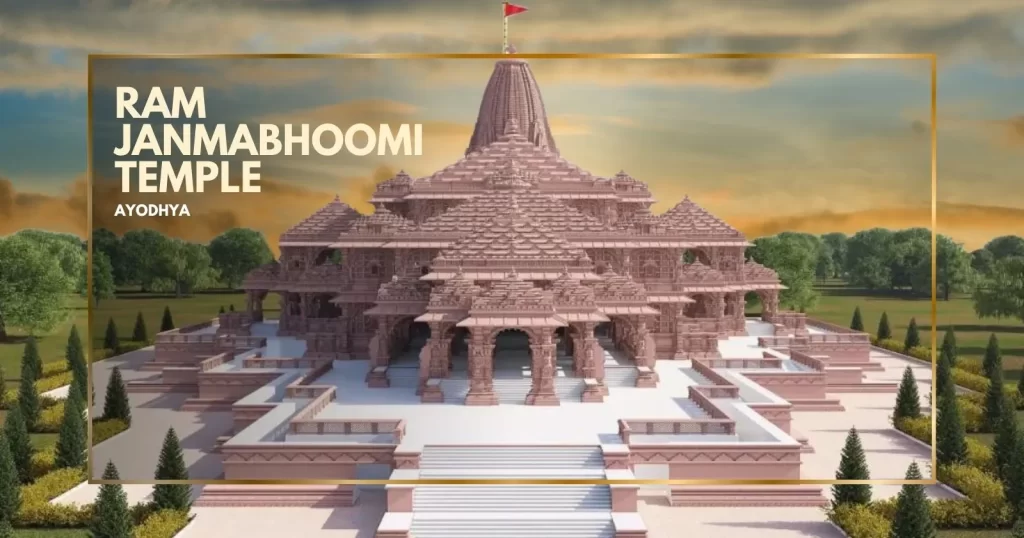
2. Hanuman Garhi
Hanuman Garhi, perched atop a hill, is a temple dedicated to the revered Lord Hanuman, a central figure in Hindu mythology. Offering a breathtaking panoramic view of Ayodhya, it is a sought-after destination, especially during the magical moments of sunrise and sunset.
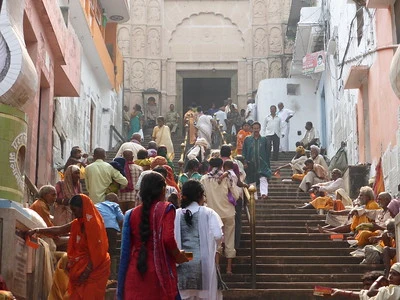
3. Kanak Bhavan
An architectural marvel, pays homage to Lord Rama and Maa Sita. Adorned with intricate designs and captivating murals, this temple is believed to be a heartfelt gift from Queen Kaikeyi to Sita.
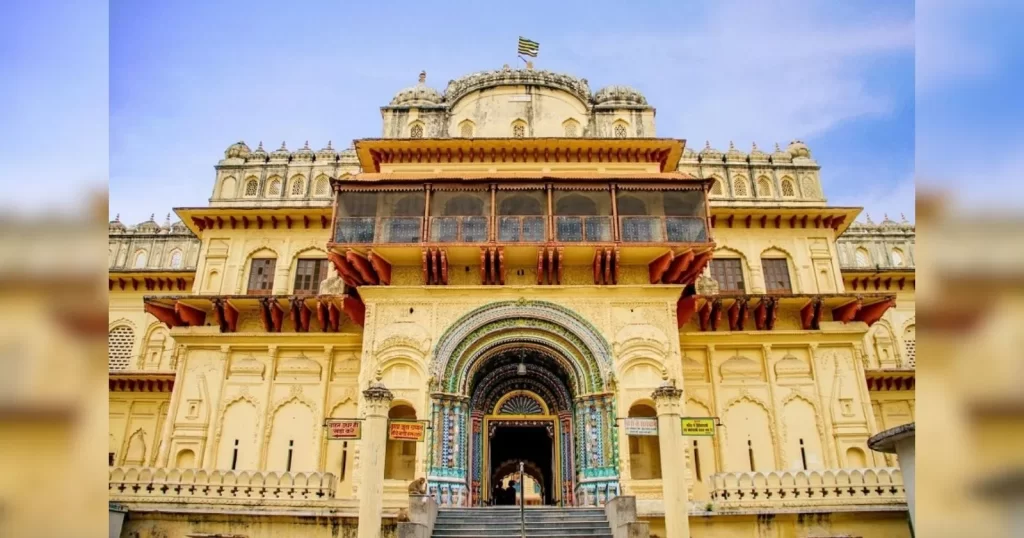
4. Tulsi Smarak Bhawan
This monuments is a tribute to the revered poet-saint Tulsidas, serves as a repository of manuscripts and memorabilia related to his life and works. It stands as a testament to the immortal words penned in the famous “Ramcharitmanas.”
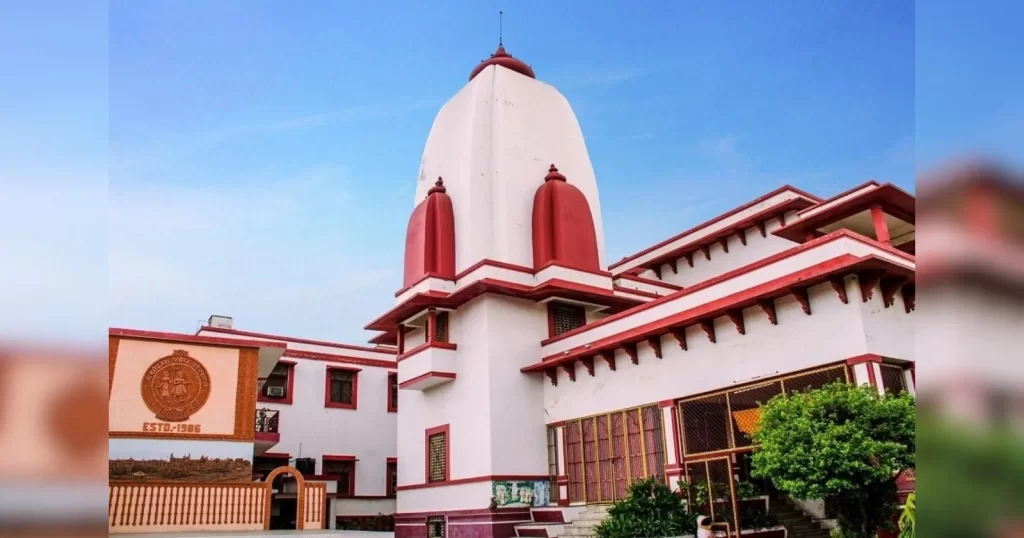
5. Nageshwarnath Temple
This temple dedicated to Lord Shiva, holds both historical and religious significance. It is said to have received the blessings of Lord Rama during his reign, adding to its sacred allure.
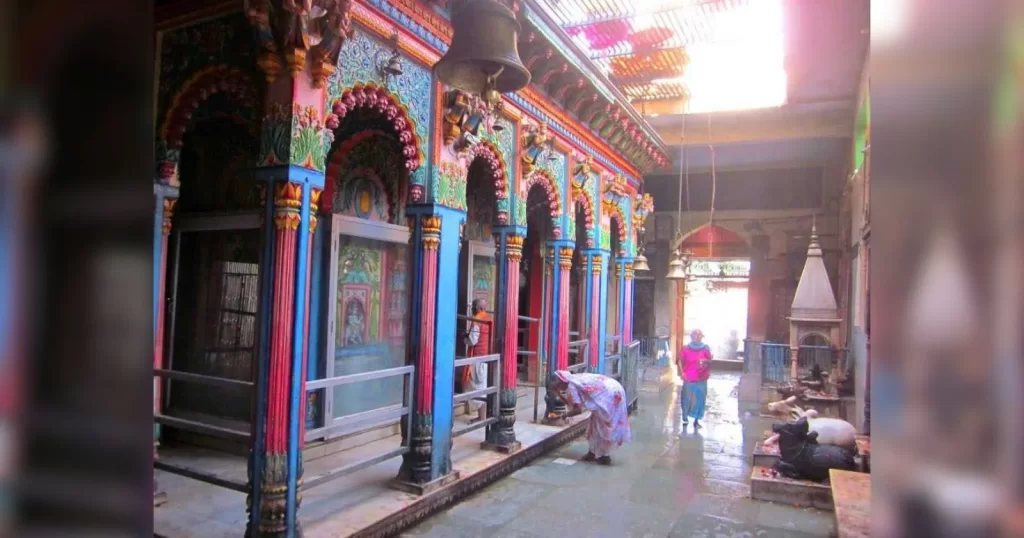
Recommendations and Tips When Travelling to Ayodhya
- Navigating Ayodhya is easy as most of the key sites are within walking distance. Start early to avoid crowds.
- As the sun sets, join the reverie at Sarayu Ghat for the evening aarti, a symphony of lights, and spirituality.
- For your first evening in Ayodhya, head to Brij Bhoj for a delightful North Indian spread.
- Don’t forget to try the local delicacies – from the creamy Lassi to the delectable Chhappan Bhog. You are sure to leave Ayodhya with your heart and stomach full.
- To all travellers, do be sensitive of your attire as this city is frequented by pilgrims.
How to Plan your Varanasi Tour?
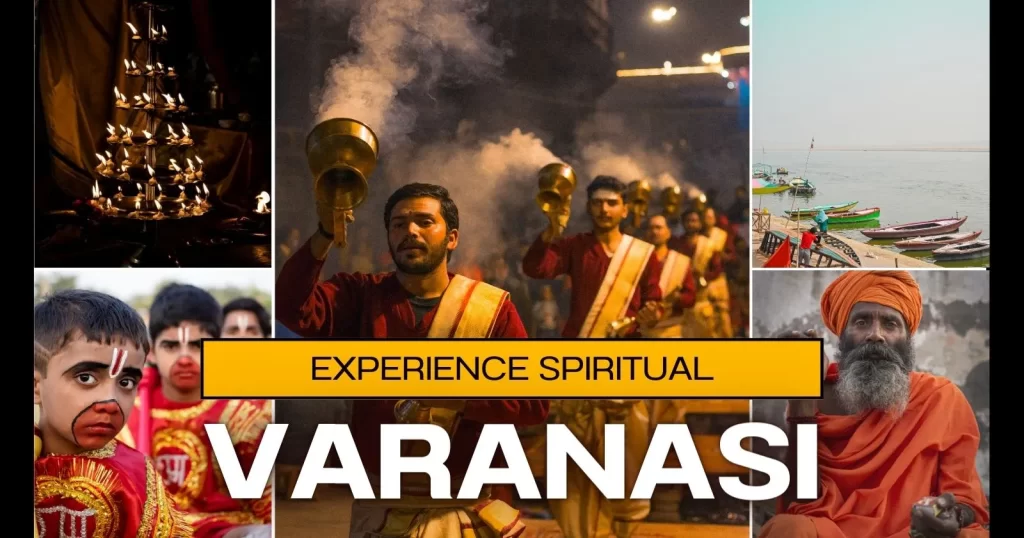
Varanasi – The Cradle of Spirituality, Culture, and Tradition
Also known as Kashi or Benaras, the sacred city of Varanasi is one of the world’s oldest living cities in the world. Mark Twain, the English author, and literature, who was enchanted by the legend and sanctity of Benaras, wrote:
“Benaras is older than history, older than tradition, older even than legend and looks twice as old as all of them put together”.
– Mark Twain
A city of learning and civilization, the land of Kashi has been the ultimate pilgrimage site for Hindus for ages.
Let me guide you through this beacon of culture and the land of renowned writers, musicians and philosophers.
How to Reach Varanasi from Major Cities?
The city is well-connected with an airport and a prominent railway junction linking it to major cities across India. Regular bus services operate between Varanasi and nearby towns, ensuring convenient travel options. If you’re journeying from Ayodhya, a bus or train ride will smoothly transport you to Varanasi in approximately 5 hours. Once in the city, auto-rickshaws, taxis, and cycle rickshaws will provide easy accessibility for exploring the vibrant streets.
Is One Day Enough For Varanasi?
To experience the true essence of Varanasi, a minimum stay of 2 days is recommended so your experience is not super rushed.
7 Places to Visit in Varanasi
1. Ghats of Ganga – Boat-Rides
Varanasi’s famed ghats are the soul of the city. There are 84 ghats, each with its own character. Dashashwamedh Ghat, Assi Ghat, and Manikarnika Ghat are among the most famous places to visit. The boat ride is a must-do activity in Varanasi. A 2-hour boat ride will take you on a spiritual sail as you visit the ghats and listen to their stories.
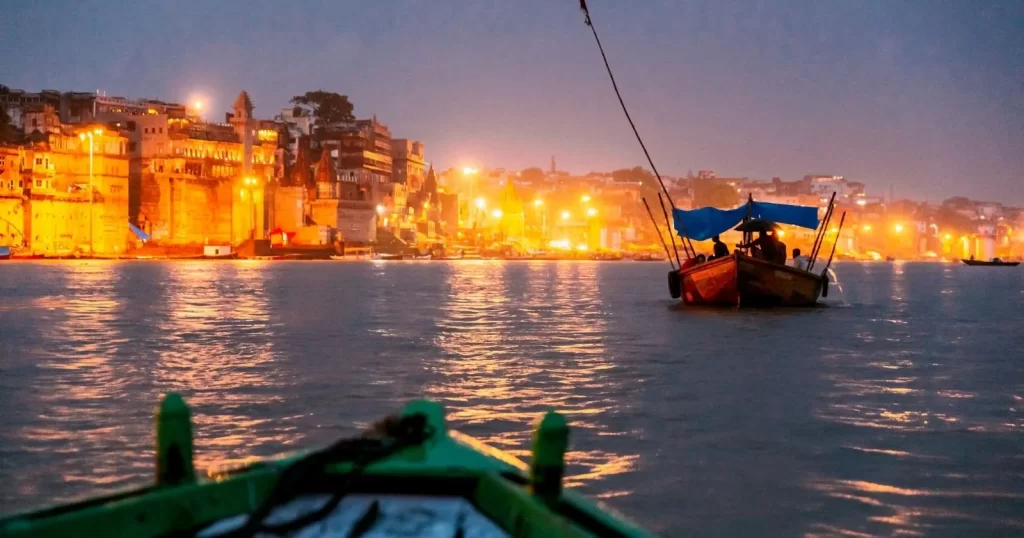
It is said that if one dies at this holy place, they attain salvation. And therefore, this place is a witness to many people who come here to spend their final days.
2. Witness the Ganga Aarti
Be in time to witness the mesmerizing Ganga Aarti at Dashashwamedh Ghat which will last for about an hour. Priests, clad in vibrant saffron robes, orchestrate the proceedings with meticulous precision. The resonant sounds of conch shells, bells, and rhythmic chants create a symphony that reverberates through the ancient city.
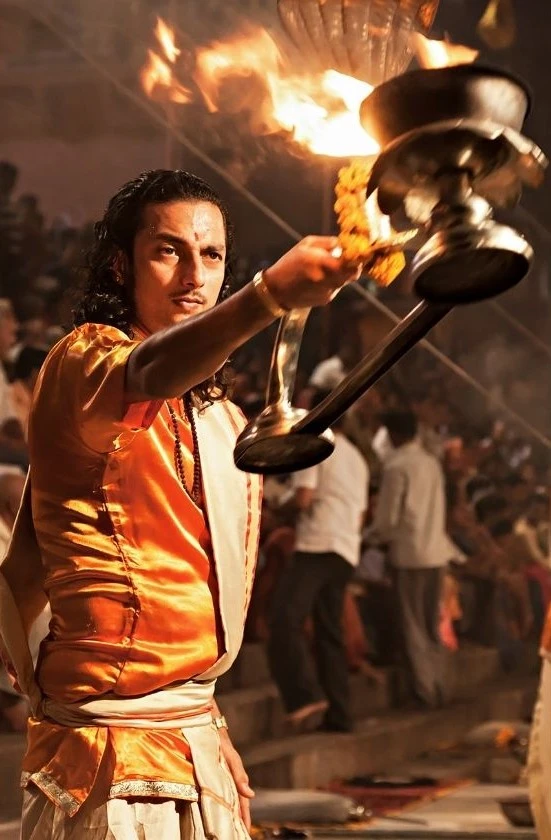
The riverbanks come alive with the soft glow of countless diyas, creating a surreal and ethereal ambience. It is not merely a ritual; it’s a profound expression of reverence, a moment when the earthly and divine realms seem to converge. As the sun begins its descent, get ready for a sensory feast as the atmosphere becomes charged with an aura of spirituality and devotion.
3. Kashi Vishwanath Temple
Navigate through narrow alleys, and feel the ancient stones beneath your feet as you enter the sanctum of Lord Shiva. This temple is one of the Jyotirlinga which draws pilgrims and tourists alike. The intricate carvings and the mesmerizing Shivlinga make this temple a centrepiece of spirituality in Varanasi.
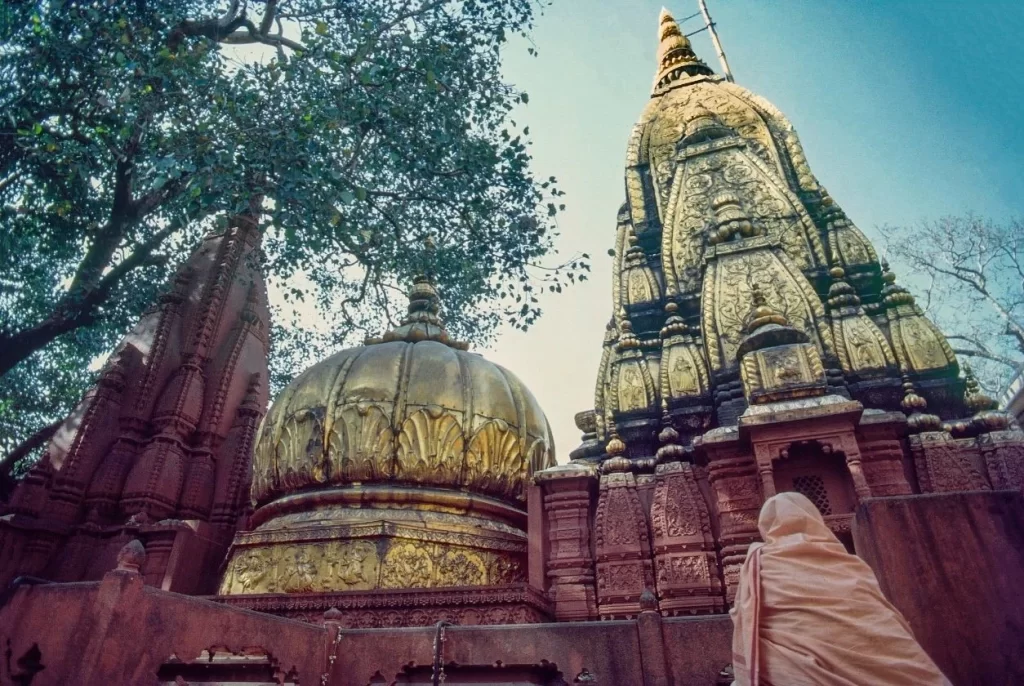
4. Narrow Alleys of the Old Varanasi City
Wandering through the narrow alleys of Varanasi’s Old City is an immersive journey into the soul of the ancient city. These serpentine lanes, adorned with vibrant colours, resonate with the timeless echoes of history. Each turn reveals bustling markets, traditional households, and hidden temples, which will reveal new facets of this city every time you visit it.
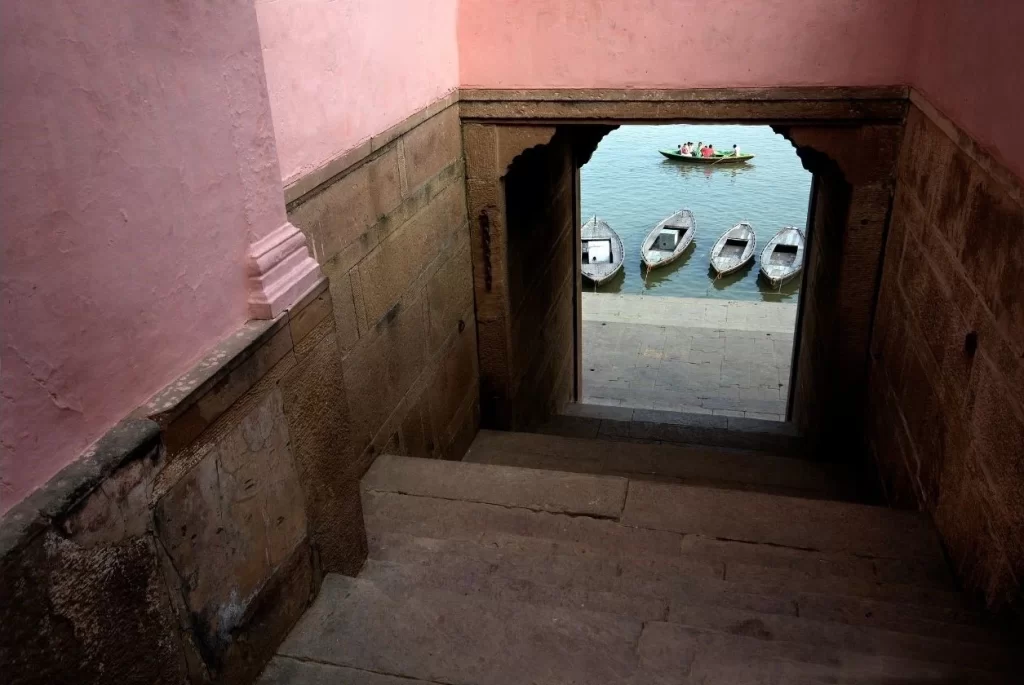
5. Bharat Kala Bhavan
For connoisseurs of art and culture, Bharat Kala Bhavan is a treasure trove of heritage and history. Located within the Banaras Hindu University, this museum showcases a rich collection of sculptures, paintings, and artefacts that narrate the tales of India’s cultural evolution. From ancient artefacts to contemporary art, Bharat Kala Bhavan is a visual odyssey through the ages.
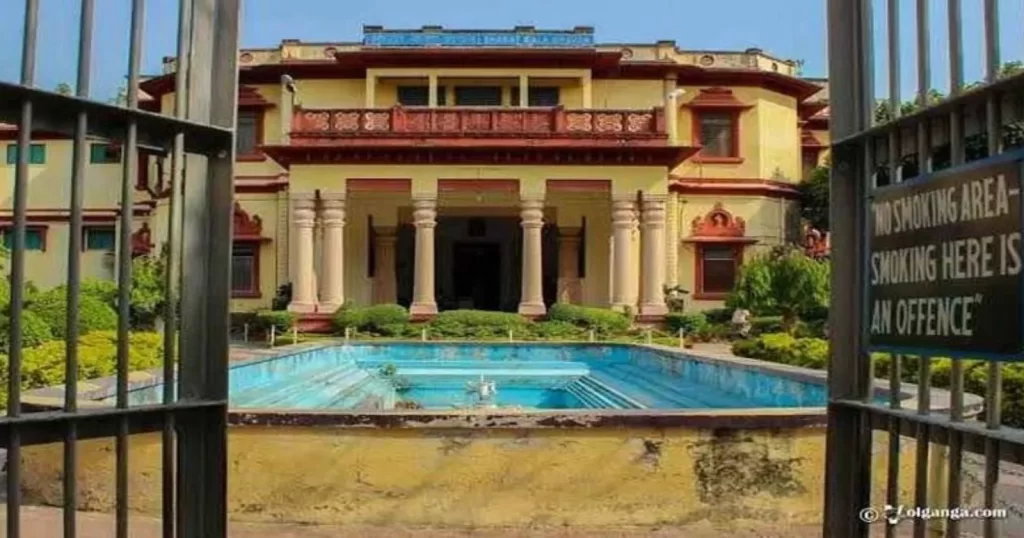
6. Tulsi Manas Mandir
Dedicated to the revered saint-poet Tulsidas, Tulsi Manas Mandir is a place of tranquil spirituality and artistic elegance. The temple walls are adorned with verses from Tulsidas’s epic “Ramcharitmanas,” narrating the timeless saga of Lord Rama. The serene surroundings and the spiritual ambience make it a haven for reflection and devotion.
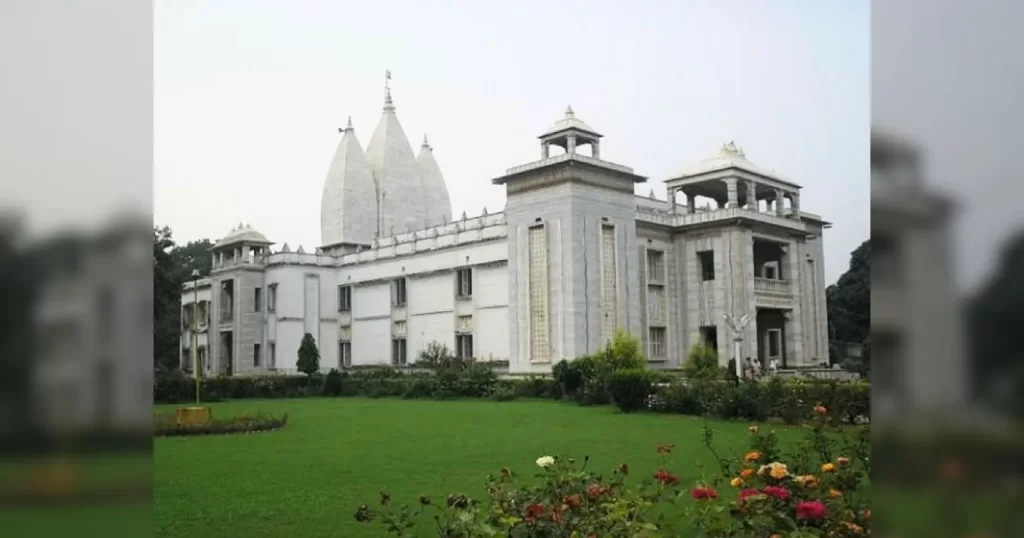
7. Ramnagar Fort
On the eastern banks of the Ganges River stands the formidable Ramnagar Fort, a symbol of Varanasi’s regal heritage. Built in the 18th century, the fort exudes grandeur with its Mughal and Rajput architectural influences.
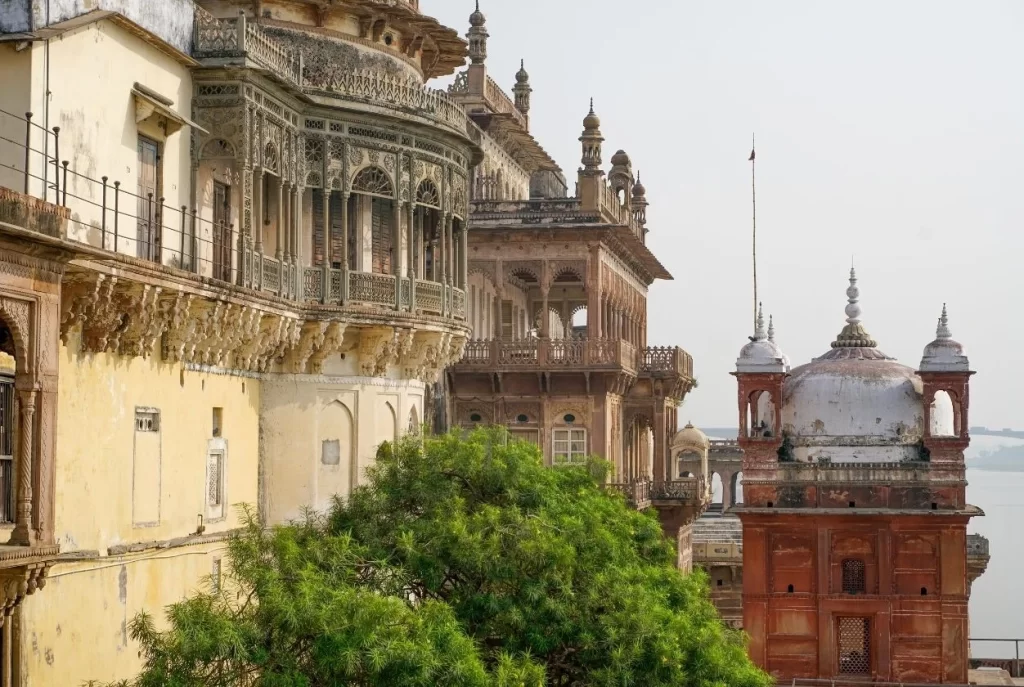
Each of these landmarks in Varanasi contributes to the city’s rich cultural mosaic, offering a glimpse into its spiritual, artistic, and historical dimensions.
Tips and Recommendations When Travelling to Varanasi
- As dawn breaks, let a boat gently carry you on the Ganges, the sun casting golden hues on the water, creating a surreal dreamscape.
- Savour the essence of Varanasi’s street food; indulge in Kachori Sabzi, and Samosa Chat and relish the ethereal sweetness of Malaiyyo.
- Stroll through the small alleys of local markets for authentic Benarasi sarees.
How to Plan Your Lucknow Tour?
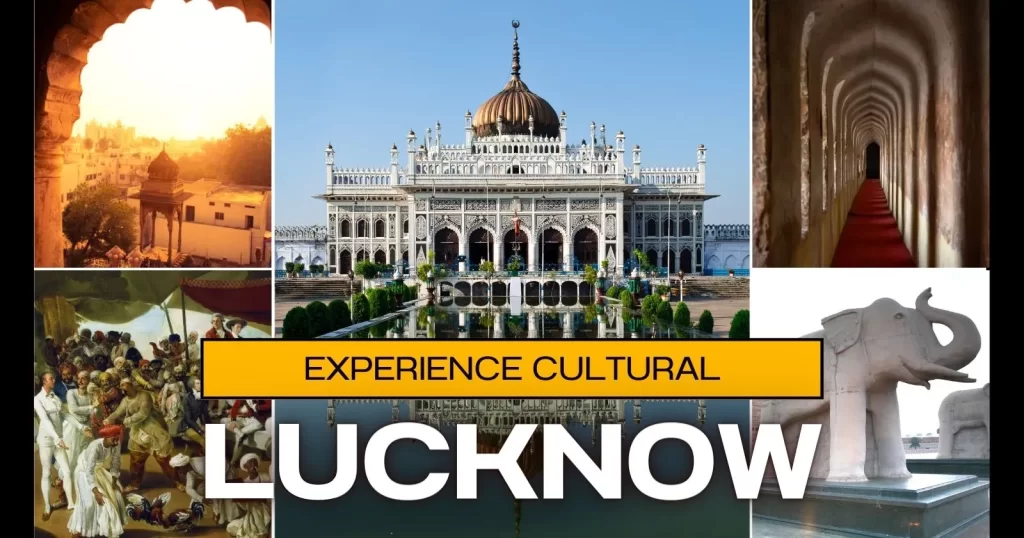
Lucknow – The City of Nawabs
Lucknow is a treasure trove of experiences with the timeless allure of the Nawabi era and the vibrant pace of modern India. The old-world charm is palpable in every intricate detail of its palaces, mosques, and bustling bazaars. The city unfolds its rich history through architectural wonders like the Bara Imambara and the regal charm of Hazratganj, a shopping haven that echoes the elegance of yesteryears.
However, Lucknow is not just a city frozen in time; it’s also a destination that embraces the modern pulse of India. Amidst the ancient structures, you’ll discover a vibrant cityscape adorned with contemporary art, bustling markets, and a lively atmosphere reflecting present-day India’s spirit.
And let’s not forget the culinary delights that await you in Lucknow. Known for its mouthwatering kebabs, biryanis, and delectable sweets, the city beckons you to savour the flavours of Nawabi cuisine, an essential part of any Lucknow experience.
How To Reach Lucknow?
Reaching Lucknow is convenient, given its well-connected transportation network. Whether you’re travelling by air, train, or road, Lucknow offers multiple options for a smooth journey.
If you are travelling to Lucknow from Varanasi, a bus or a train would conveniently transport you in 5 hours and 30 minutes. Ayodhya to Lucknow distance is shorter and is easily covered in under 3 hours. You can decide which route works best for you and plan accordingly.
Is One Day Enough For Lucknow?
If you are reaching Lucknow directly, 1 full day of sightseeing can cover all the major attractions. However, if shopping is on your bucket list or if you want to participate in some cultural activities, you can easily spend a couple of days in Lucknow to enjoy its charms.
8 Things To Do in Lucknow
1. Historical Heritage
Lucknow is steeped in history and the architectural landmarks are a testament to its rich heritage.
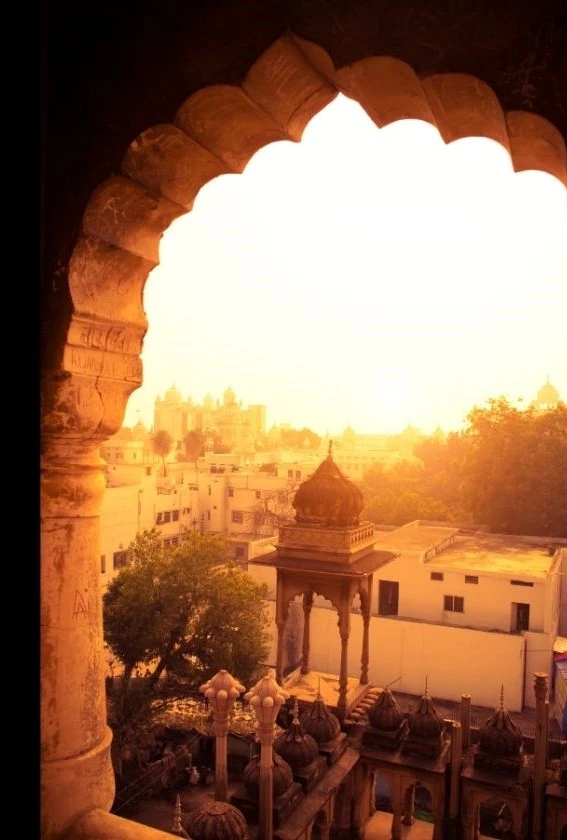
2. Bara Imambara
A symbol of architectural grandeur, Bara Imambara is an imposing structure built by Nawab Asaf-ud-Daula. Its central hall, one of the largest arched constructions without support beams, is awe-inspiring. The labyrinthine Bhool Bhulaiya adds an element of mystery to this historical marvel.
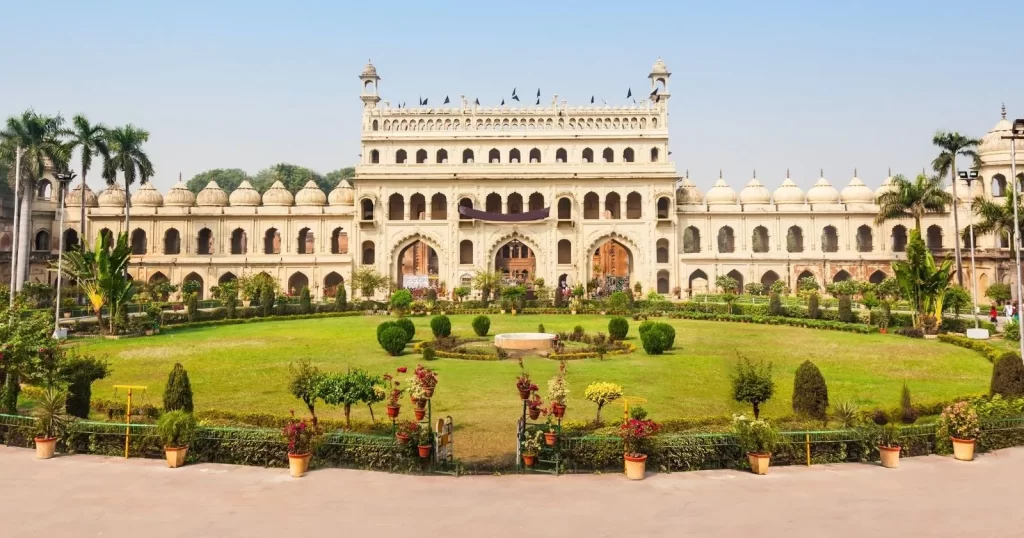
3. Rumi Darwaza
Majestic and imposing, Rumi Darwaza is a gateway that transports you to the splendours of the Awadhi era. Built under the patronage of Nawab Asaf-ud-Daula, it stands as a testament to Lucknow’s architectural finesse.
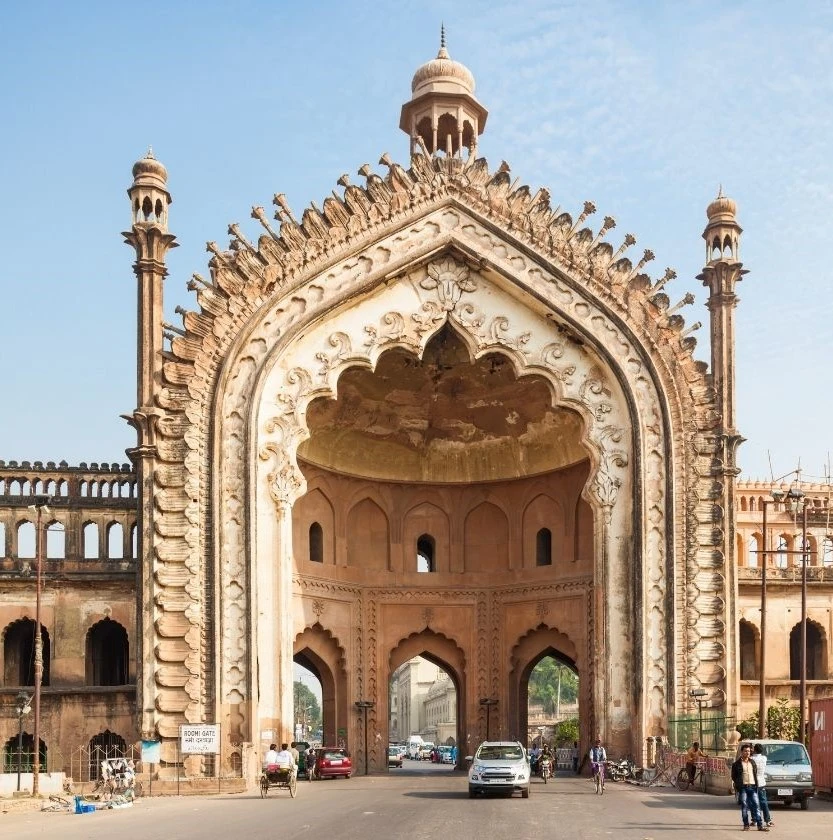
4. Chota Imambara
Often referred to as the “Palace of Lights,” Chota Imambara is a splendid example of Mughal and Persian architecture. The grand chandeliers and silver throne inside the Imambara add to its luxury.
5. Hazratganj
The heart of Lucknow, Hazratganj, is a bustling market that epitomizes the city’s Nawabi charm. Stroll through its tree-lined avenues, explore high-end boutiques, and savour the aroma of street food. It’s a perfect blend of sophistication and local vibrancy.
6. Lucknow Zoo
For a serene escape, the Lucknow Zoo offers a delightful experience. Home to a diverse range of flora and fauna, it provides a refreshing break from the city’s historical sites. The Toy Train adds a whimsical touch, making it an enjoyable visit for all ages.
7. Janeshwar Mishra Park
One of the largest parks in Asia, Janeshwar Mishra Park is a modern oasis in Lucknow. The sprawling green expanse, jogging tracks, and serene lakes provide a peaceful retreat. It’s a popular spot for locals and tourists alike to unwind and connect with nature.
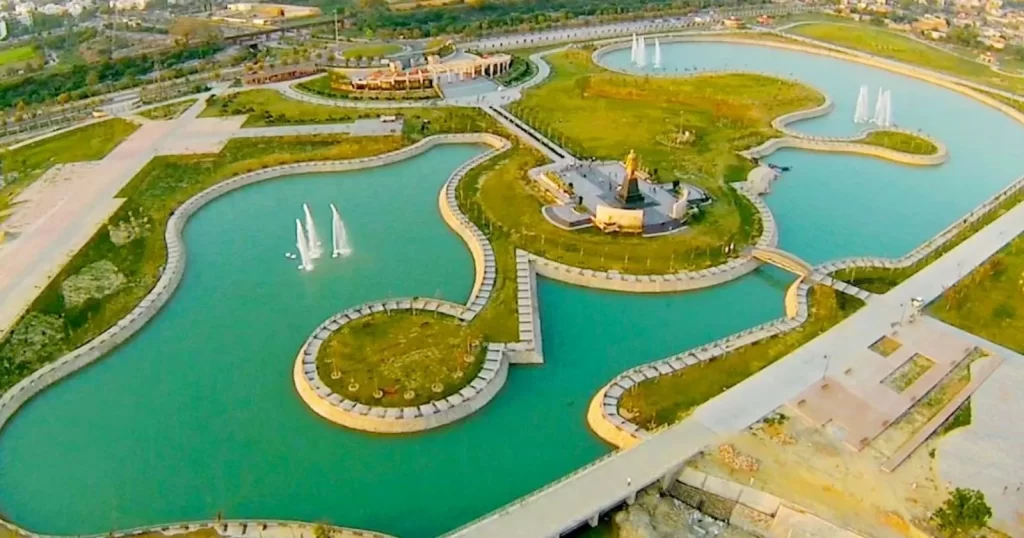
8. The Ghats of Gomti River
While not as famous as the Varanasi Ghats, Lucknow also has beautiful ghats. The city is known for its riverfront beauty which is a great place for leisurely walks and picnics.
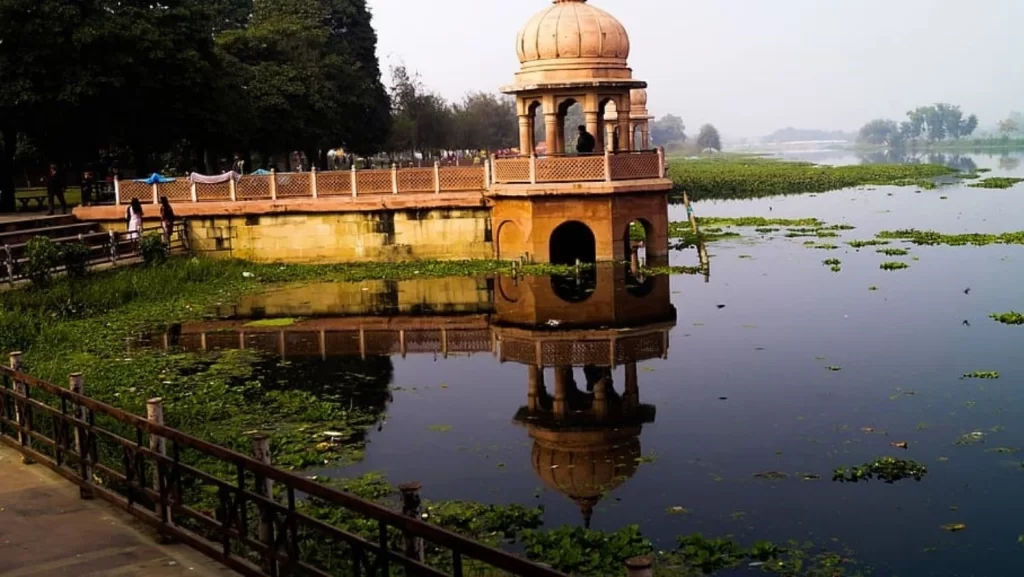
Tips and Recommendations When Travelling to Lucknow
- Lucknow is known for its Chikankari embroidery. Shop for exquisite Chikan garments in the bustling markets of Animabad and Hazratganj.
- Experience the Lucknowi “Tehzeeb” or cultural etiquette, and “Adab” or refined manners. The people of Lucknow are admired for their hospitality, politeness, and grace.
- When you are in Lucknow, INDULGE. The Kebabs, Biryani, Lucknowi Chaat, Nihari, and Sheermal are only some of the delicacies of the Lucknowi large platter.
To Wrap Your Amazing Adventure in UP
These four days are not your regular weekend escape – it is a journey of discovery and seeking. Immerse yourself in the sacred ghats of Varanasi, uncover the historical treasures of Ayodhya, and indulge in the Nawabi elegance of Lucknow.
As you traverse these enchanting cities, let the warmth of the locals, the aromas of delectable cuisine, and the echoes of centuries-old stories leave a mark on your journey.
So, with tickets booked and bags packed, embark on this gem-laden adventure through the heart of Uttar Pradesh. If you are feeling adventurous and want to undertake a fun road trip, it will be a memory that lasts a lifetime. May the journey be as enchanting as the destinations themselves. You are sure to discover different shades of our rich culture each with its own, unique story and treasures.
Are you ready to write your UP story?

